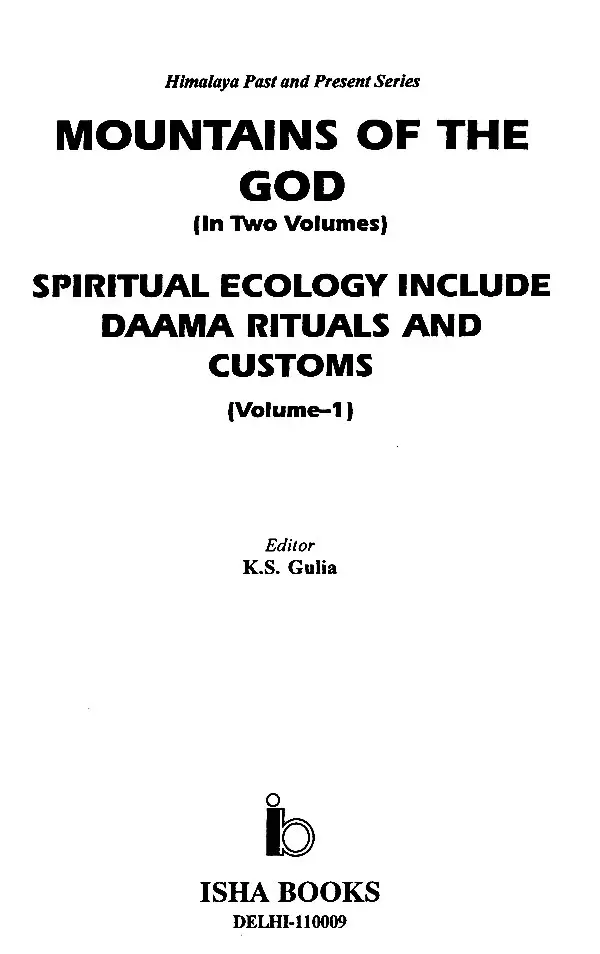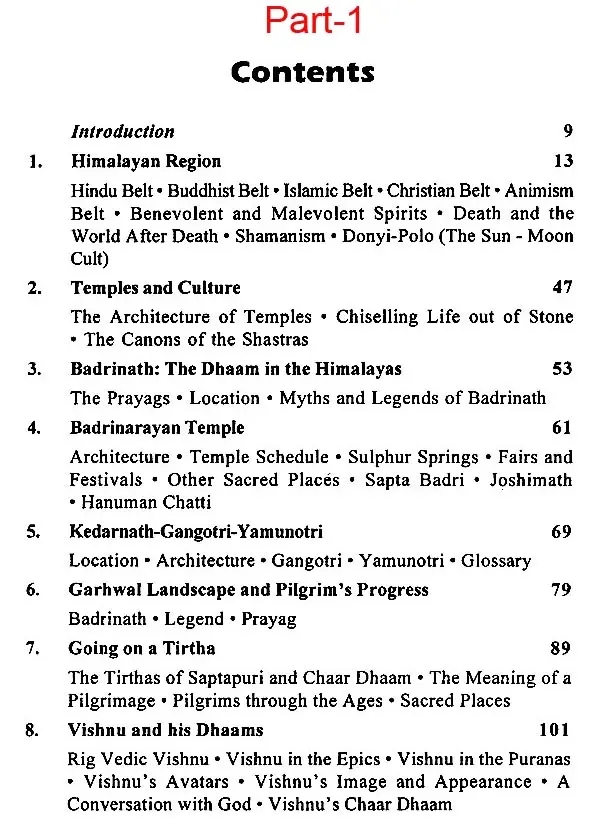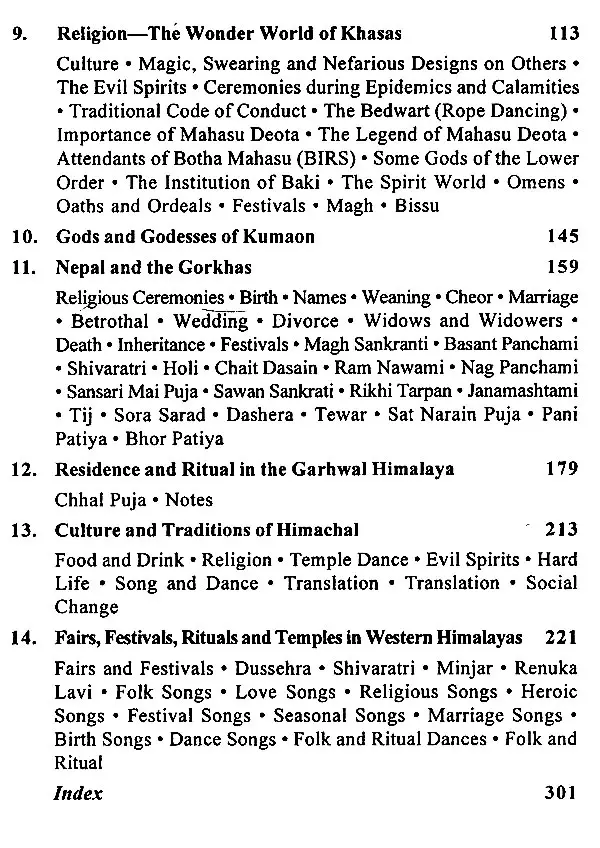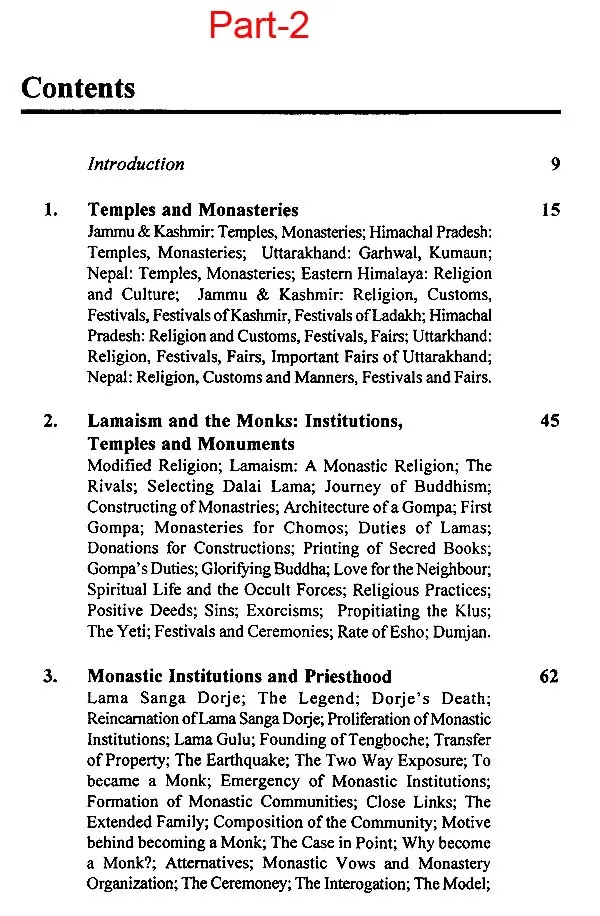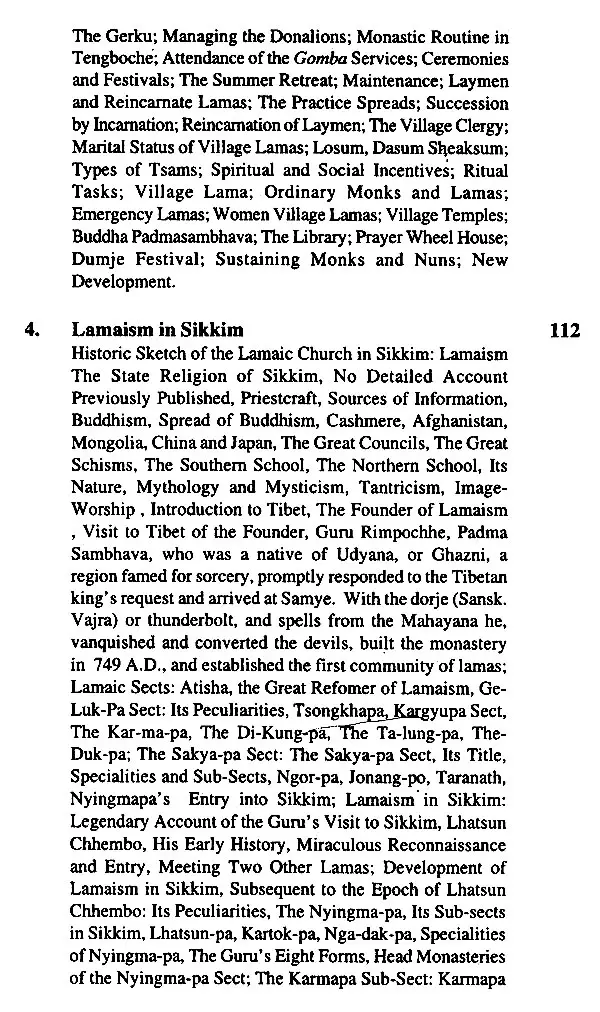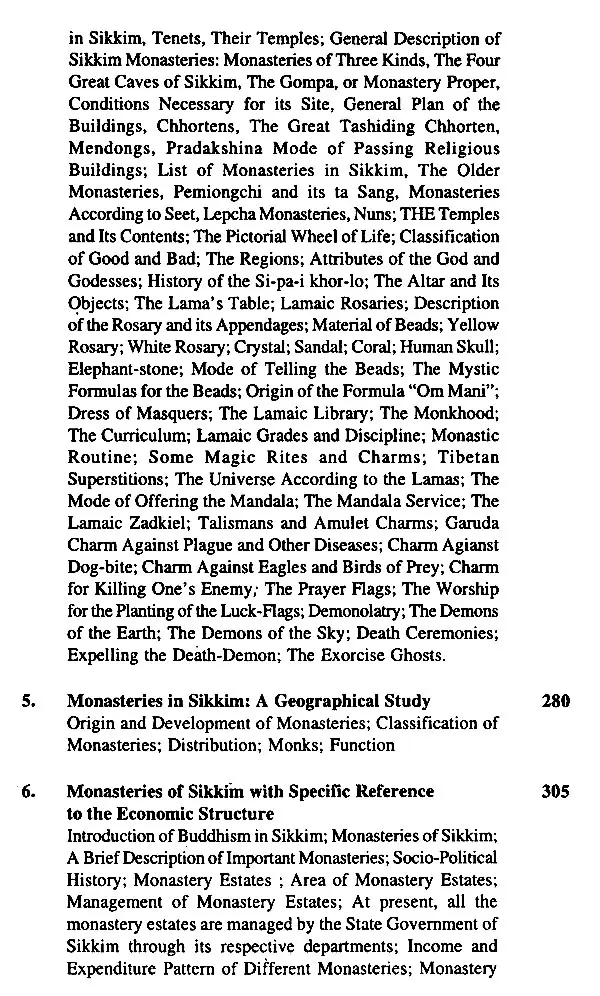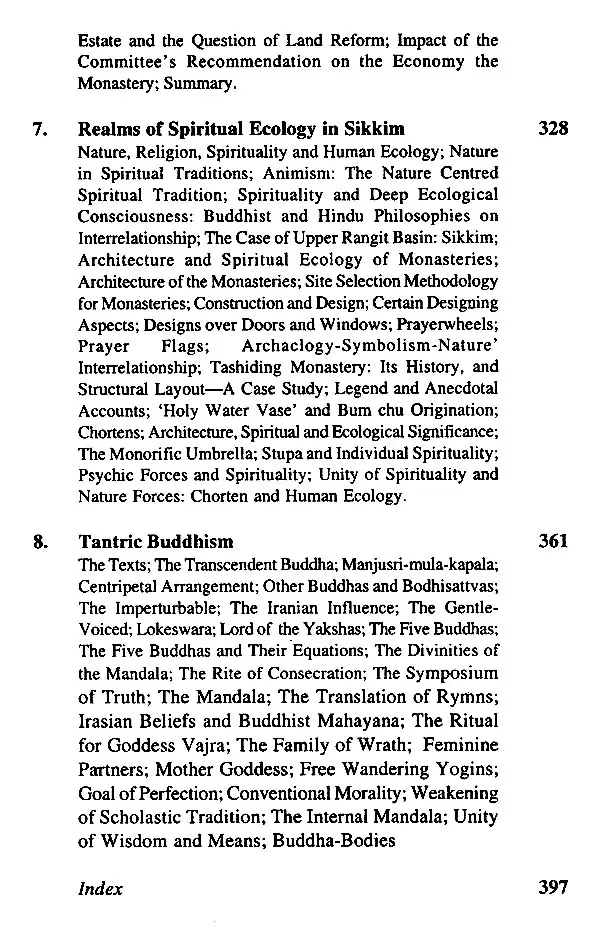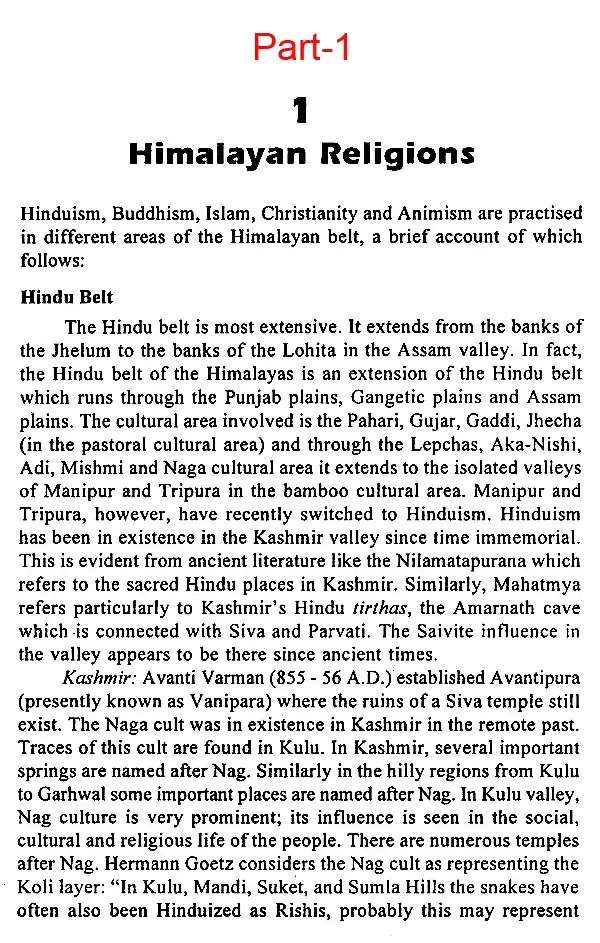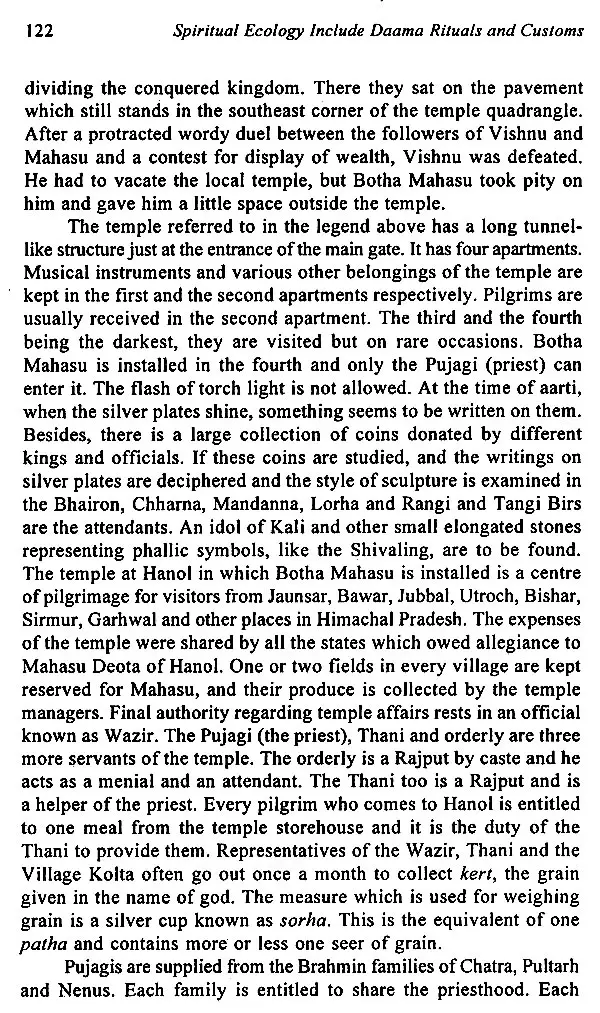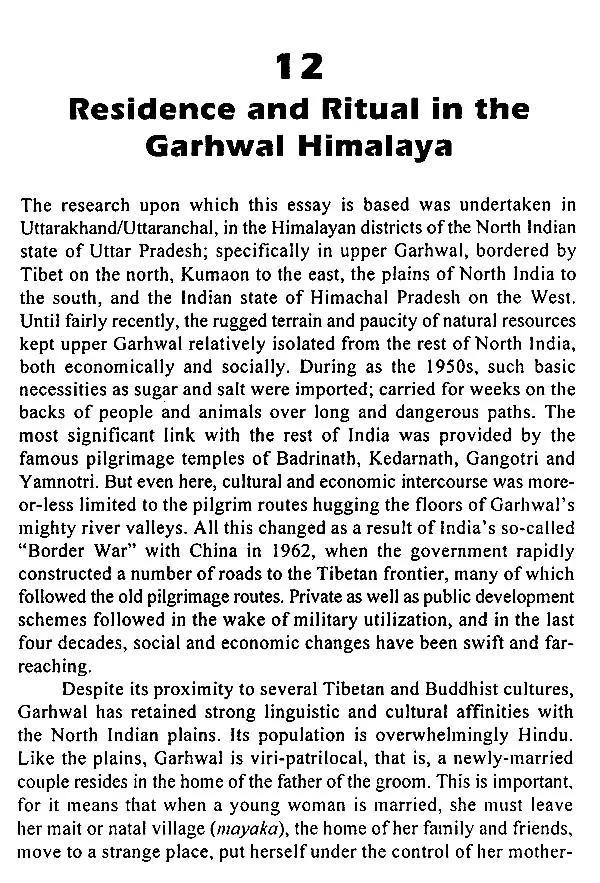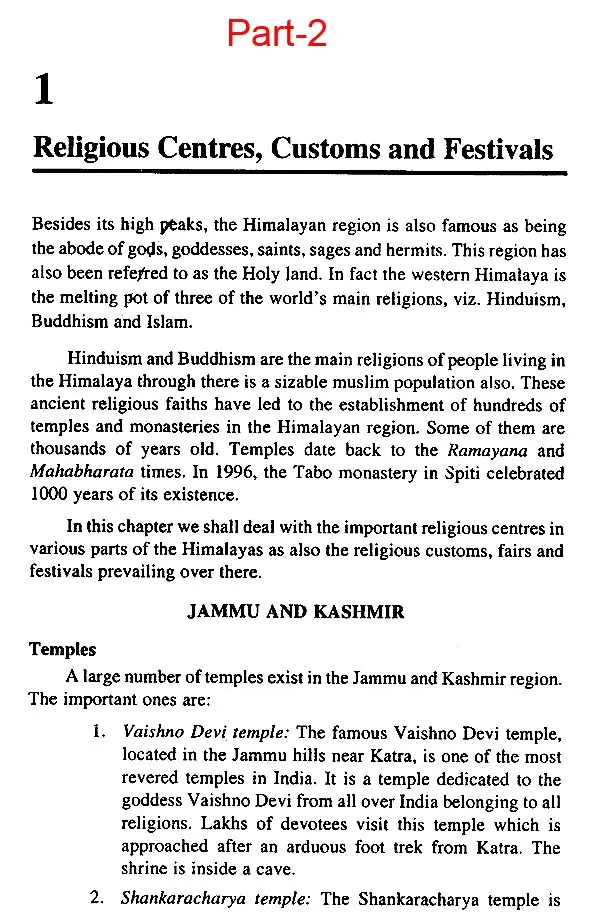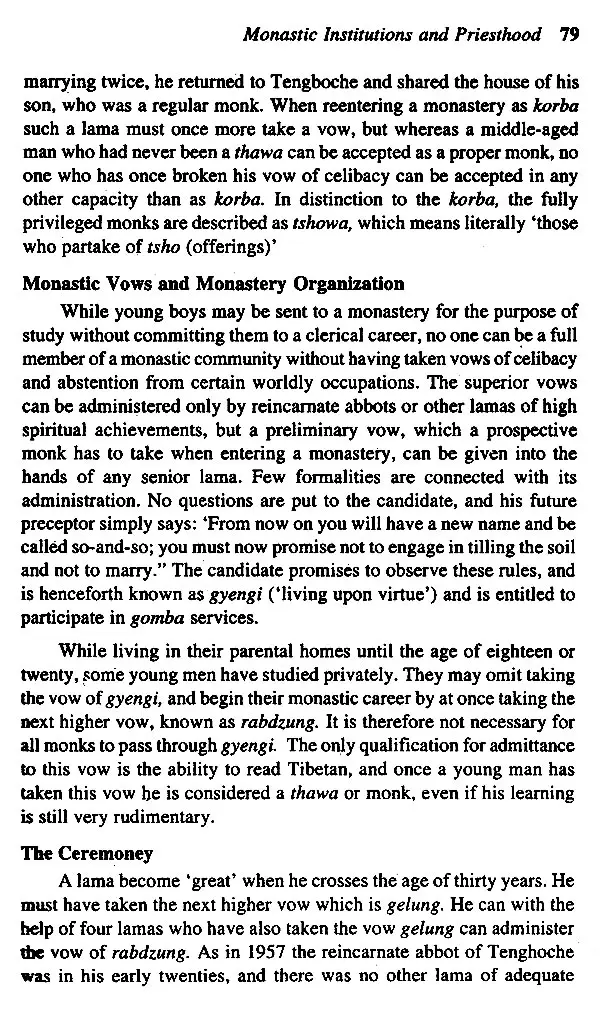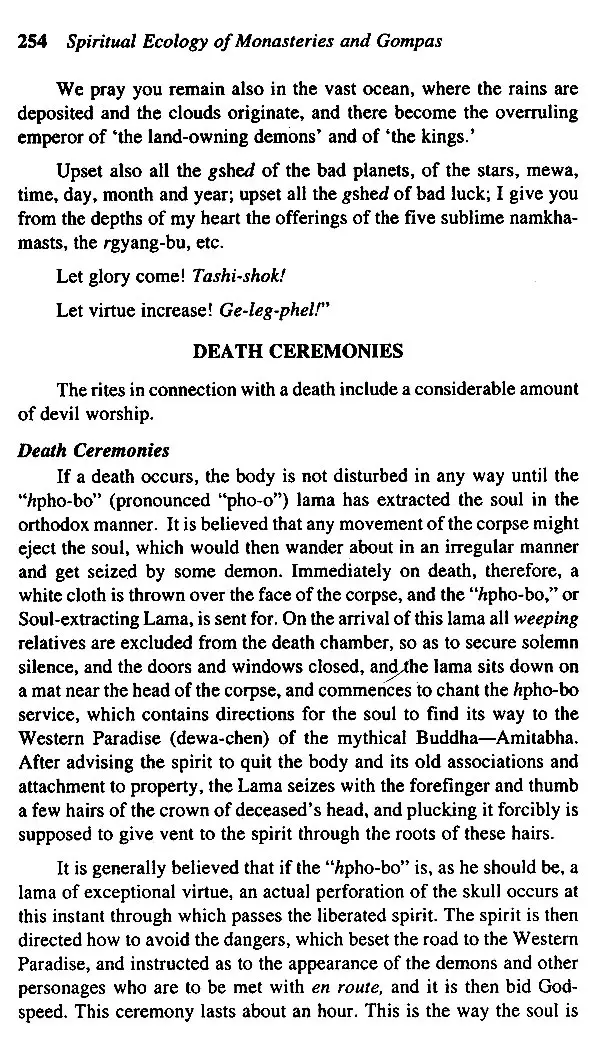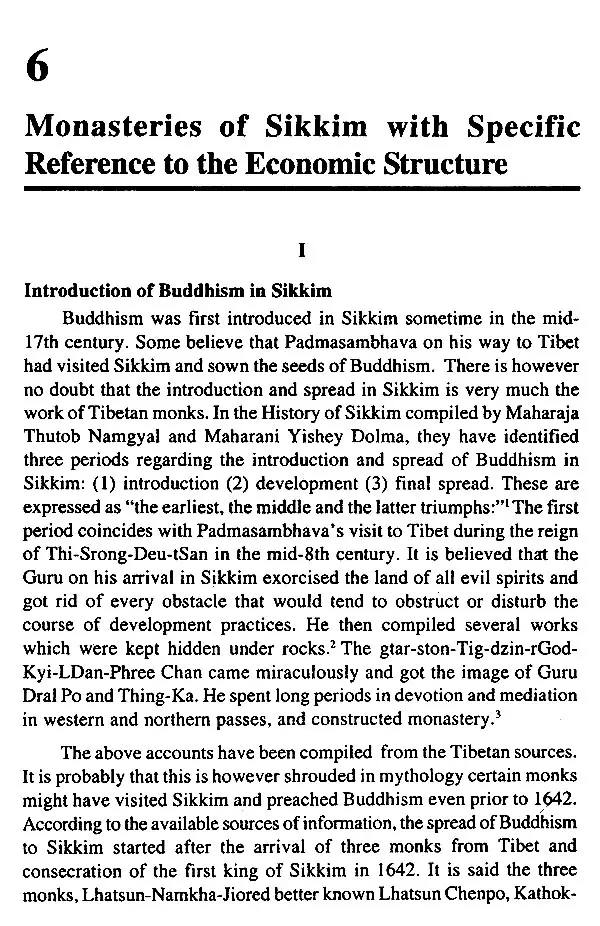
Mountains of the God (Spiritual Ecology of Himalayan Region)
Book Specification
| Item Code: | UAM862 |
| Author: | K.S. Gulia |
| Publisher: | Isha Books, Delhi |
| Language: | English |
| Edition: | 2007 |
| ISBN: | 9788182054202 |
| Pages: | 717 |
| Cover: | HARDCOVER |
| Other Details | 9.00 X 6.00 inch |
| Weight | 1.16 kg |
Book Description
Volume 1: Spiritual Ecology Including Dharma Rituals and Customs: This book presents a new vista to the Himalayan religions Brahmanical as well as non Brahmanical and primitive. Most of the pre historic primitive religions, however, are adopting nowadays Brahmanical religious practices in order to climb up the social ladder. The book reveals that the Himalayan Temples also serve to preserve and protect the culture of the social segments concerned. But large shrines like Badrinath, Kedarnath, Gangotri and Yamunotri have power of influencing the non-Brahmanical and primitive culture, and set pace for a new cultural trend, besides the religious trends.
Volume 2: Spiritual Ecology of Monasteries and Gompas: Hindu and Mahayana Buddhist Philosophies followed in the Himalayan region, offer much to ponder on the spiritual and metaphysical connections between human and The Buddhist 'Monasteries' and 'Gomaps' in the Himalayas, and Tibet include the erstwhile cave hermitages, the 'hlakkangs' or 'small temples' and conglomerations of temples. The building sites for 'gompas' and 'monasteries' are selected with great care, with due considerations to auguries and omens. Prayer wheels and prayer flags are duly placed and erected, and differentiated on the basis of their colour patterns. A number of legends are associated with the monasteries and gompas. The volume addresses about secrets in detail.
Brigadier (Dr.) Kuldip Singh Gulia is a noted and active environmentalist. A Ph.D. in Human Ecology of the Himalayan Ecosystems, he has applied himself into sustained research in various facets of Human Ecology. Compilations of the vast storehouse of Human Ecology papers have been published in five volumes under the title "Encyclopaedia of Human Ecology".
His books Human Ecology of Sikkim and Geneses of Disasters, have been widely acclaimed in the intellectual circles for qualitative and analytical excellence. His research papers on human ecosystems of the Himalayas and of the Arid Zone of Indian Thar Desert make interesting studies.
The author commanded an Infantry Brigade in Gujarat in the aftermath of the devastating earthquake of 26 January 2001, and was deeply involved in rehabilitating the suffering population in the affected areas. He successfully commanded his Brigade in Munabao sector of Barmer (Rajasthan) during OPERATION PRAKRAM.
Currently appointed as Director of the Pratap Group of Public Schools at Karnal, he continues his Human Ecology related works in the Ecosystems of the Indian Schooling fraternity.
The Himalayas are heaven on earth, the swarga of the Hindus. Hindu mythology says that this is the house of its pantheon of gods and goddesses. If humans imagine a place called heaven it would be something like the Himalayas. A dauntingly majestic landscape of soaring peaks covered in everlasting snow, emerald valleys and forests, fields of wild flowers, silver waterfalls and turbulent rivers flowing through deep gorges. The Himalayas are nature's very own devalaya, a landscape created like a temple to the gods. The Himalayan belt practices various religions like: Hinduism, Buddhism, Islam, Christianity and ever animism followed in different areas.
Foremost of these is Hinduism which extends from the banks of the Jhelum to the banks of the Lohita in the Assam valley. The cultural areas involved include: the Pahari, Gujar, Gaddi, Jhecha (in the pastoral cultural area) and the Lepchas, Aka-Nishi, Adi, Mishmi, Nagas it extends to the isolated valleys of Manipur and Tripura in the bamboo cultural area.
The Himalayan belt stands testimony to various temples and temple towns built down the ages. These have not only preserved Hindu religion but through their patronage they have also kept alive India's cultural heritage. Temple towns like Madurai or Varanasi have been great centers of scholarship and social life. The Gurukuls were based here. In these the students came from all over the country to leave ancient Hindu texts like vedas Upanishads as well as subjects like mathematics, logic, grammar, astronomy and medicine. That these ancient texts have survived till date is due to the dedication of countless scholars at these gurukuls.
